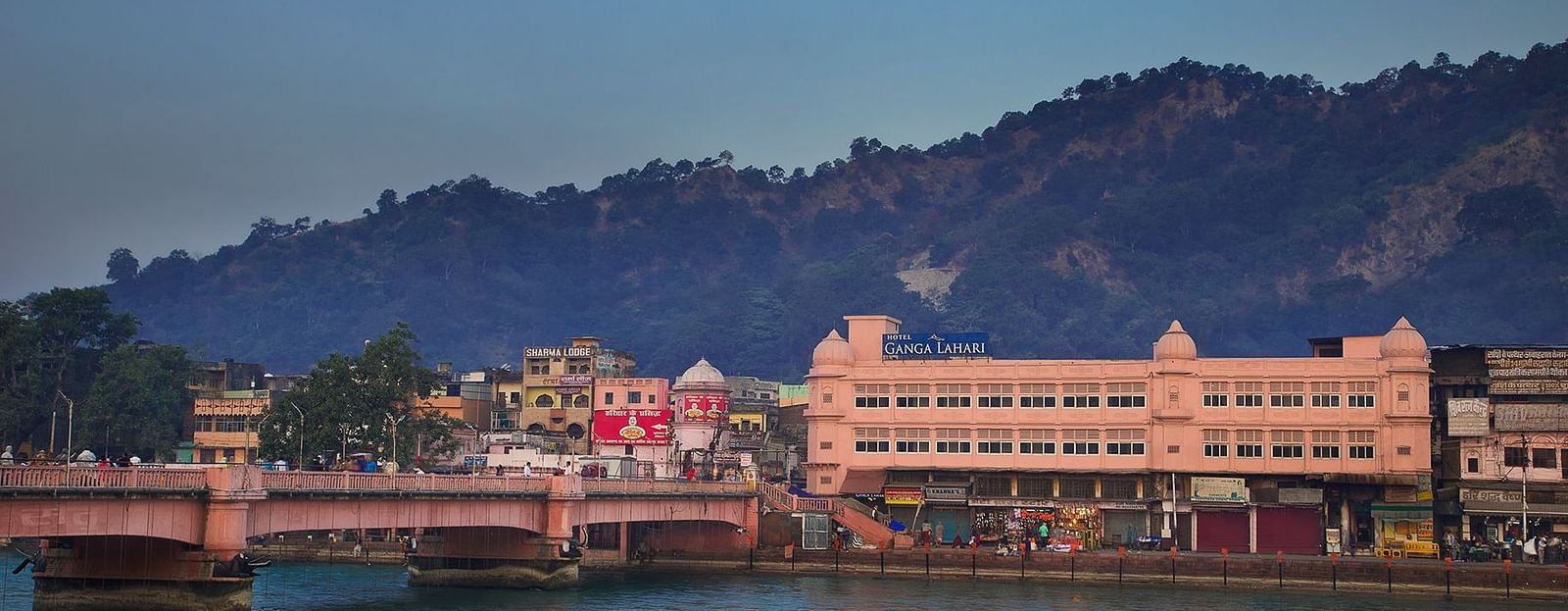

Home > Ganga Lahari, Haridwar > About Haridwar > Places of Tourist Interest
Places of Tourist Interest - Haridwar
A paradise for nature lovers, Haridwar tour offers a kaleidoscope of Indian culture and civilization. Religious temples in Haridwar revive the enchanting myths of the ancient period, taking you on a journey back to the majestic realm of the Hindus. Every sight and sound of this holy city lets the mind sink into deep contemplation, thereby effusing a serene calm. Haridwar tourism offers the following attractions for tourists to watch out for:
Ardh Kumbh & Kumbh Mela
Though all Hindu festivals are celebrated in Haridwar with pomp and gaiety, it is the Ardh Kumbh and Kumbh Mela which attracts tourists in lakhs to this place. The history of the Kumbh Mela dates back to the creation of the Universe legends. Mythology states that the Gods and the Demons once churned the ocean to retrieve the Kumbh (pot) containing nectar of immortality (Amrit). As Dhanvantri, the divine healer appeared with the Kumbh containing nectar in her palms, a great fight followed between the Gods and the Demons to wrist the pitcher. During the fierce battle in the sky, a few drops of nectar fell at four different places, Prayag, Hardwar, Nasik, and Ujjain. Since then devotees converge to commemorate this divine event.
Har Ki Pauri
King Vikramaditya constructed this sacred Ghat in memory of his brother Bhatrihari who, it is believed, had come to Haridwar to meditate on the banks of the Ganga. This ghat later came to be known as Har-Ki-Pauri (also called Brahamakund). At twilight, golden hues of floral diyas reflected in the river Ganga, present the most enchanting sight. The imprint of Lord Hari's footprint hallows the riverbank temple here. The ghat is regarded the most sacred and auspicious point to bathe in the Ganga during the 12 year Kumbh and the 6 year Ardh Kumbh.
Sapt Rishi Ashram and Sapt Sarovar
According to legend, the Saptarshis (seven sages) were deep in meditation here. The Ganga, not wanting to disturb them, split herself into seven streams (Sapt Sarovar) around them.
Mansa Devi Temple
The temple of Goddess Mansa Devi is situated at the top of Bilwa Parwat. The rope-way, with its brightly colored cable cars, takes devotees to the old hilltop of Mansa Devi.
Chandi Devi Temple
The Chandi Devi temple at the top of Neel Parvat on river Ganga's banks was built in1929 A.D. by the King of Kashmir-Suchat Singh. A three-kilometer trek from Chandighat, it is believed that the main statue was established by the Adi Shankaracharya in 8th century AD. It is at a distance of 6 km on Neel Parvat on the other bank of River Ganga.
Maya Devi Temple
This is an ancient temple of Maya Devi, the Adhisthatri deity of Haridwar, known as one of the Siddhapethas, believed to be the places where the hearts and navel of Goddess Sati had fallen.
Daksha Mahadev Temple
The ancient temple of Daksha Mahadev stands in the south Kankhal town. Mythology has it that King Daksha Prajapati, father of Sati (Lord Shiva's first wife), performed yajna at this place, but didn't invite Lord Shiva (Mahadev). Feeling insulted, Sati burnt herself in the yajna kund. Provoked by this, the ganas (followers) of Lord Shiva killed King Daksha. Later, Lord Shiva brought him back to life.
Aarti
At 7:00 PM (local time) every day, an aarti is performed on the Ganga by pilgrims. Tourists can also perform the aarti. Candles on lotus petals are floated down the river with religious hymns being played on loud speakers. Rain or shine, summer or winter, the aarti starts promptly at 7 PM and is an experience worth beholding.